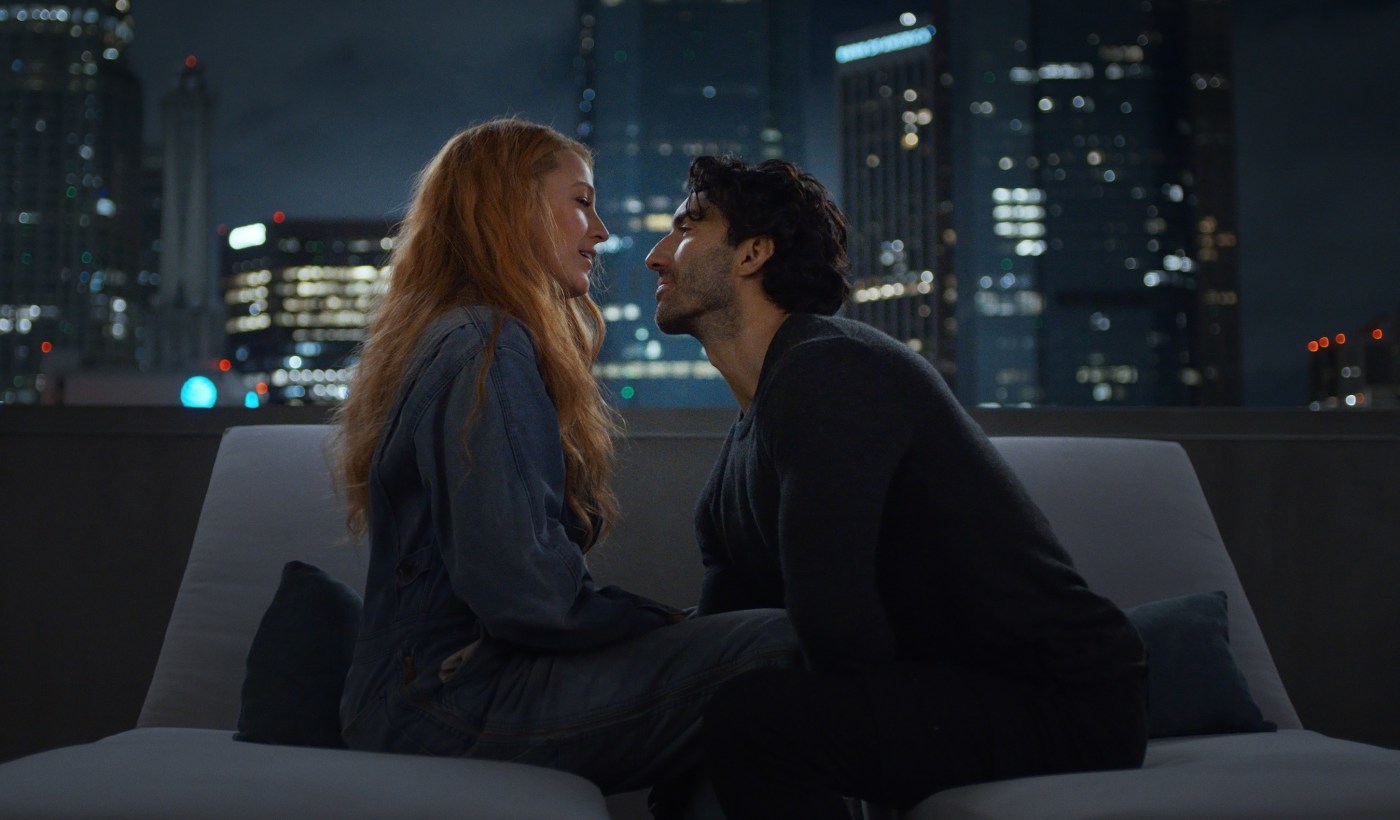
Movie review: ‘It Ends With Us’ a bungled adaptation of romance novel
To understand the new Blake Lively-starring romantic melodrama “It Ends With Us” is to understand that it exists in context: in the context of the long tradition of the “women’s picture,” and the current landscape of the publishing industry, which is dominated by female authors and consumers. This understanding explains the film’s existence, as it serves an audience that is often overlooked in today’s film market, and sports extensive name recognition.
Adapted for the screen by Christy Hall, the source text of “It Ends With Us,” is the massively successful 2016 novel by Colleen Hoover, an author who started out self-publishing her own books. They became so popular on Kindle Unlimited that she made it to the New York Times bestseller list on her own before she was picked up by Atria Books, a division of Simon & Schuster. “It Ends With Us” is a cathartic personal story for Hoover, based on family experience, about a woman, Lily (played in the film by Lively) overcoming a cycle of domestic abuse, which she witnessed in her parents’ marriage and later experiences herself in a toxic relationship.
The story follows Lily (last name Bloom, yes it is acknowledged), a young woman living in Boston, who has dreams of opening up her own flower shop (yes, it is called “Lily Bloom’s”). The film opens at the funeral of her father (Kevin McKidd) at which Lily struggles to name even a few things she loved and respected about him. While processing her complex feelings on a rooftop patio at night, she encounters a hunky neurosurgeon with a temper, Ryle Kincaid (Justin Baldoni).
Running into him months later, his sister Allysa (Jenny Slate) now working at Lily Bloom’s, they fall into a relationship, which is complicated by yet another coincidental run-in, with Lily’s first love Atlas Corrigan (Brandon Sklenar), the hunky chef and owner at their favorite restaurant, whom Lily has not seen since high school. Ryle’s jealousy toward Atlas escalates the increasing volatility of their relationship, which has started to result in violence and injury toward Lily, whether accidental or not.
For all the limitations of Hoover’s novel, with its juvenile writing style and cringe-worthy prose, it is at least clear-eyed about the realities of intimate partner violence. Lily in the book is young (early 20s) and an often irritatingly immature character, but her eyes are at least open to what’s happening in her relationship. The Lily of the movie reads older, and cooler; the dialogue by Hall is much sharper and funnier. But in the film, Lily is delusional about her relationship, and the film blurs the lines of the abuse for too long to a frustrating degree that essentially robs our heroine of her agency, and elides some of Ryle’s obvious manipulation.
Of note here is that Baldoni, playing the abusive Ryle, is also the film’s director. Perhaps it was in the screenwriting, or a top-down decision based on test screenings and audience reaction, but there is a clear story choice to conceal Ryle’s true nature, and reveal his intentions late in the film, in montage, that does not square with how the events proceed in Hoover’s telling. Perhaps this decision was made so that the audience (who may not have read the book) might not turn on his character too soon.
Other small storytelling changes alleviate Ryle of some of his darker actions as well. Choices to condense, omit and change texts in the process of adaptation are necessary, but the choices made for this film adaptation result in our heroine, though seemingly much more mature and intelligent, becoming a character who is helpless, complicit and confused, which is troubling for this topic of intimate partner violence.
Baldoni’s approach to crafting the stylistic world of “It Ends With Us” is to offer the romantic escapist fantasy inherent to the literary and cinematic genre: elaborate costume and production design, luxe interiors, a Boston where it mysteriously never snows, extensive courtship and seduction montages set to contemporary indie ballads. It never feels like it’s set in the real world, but given that this is romantic melodrama, it doesn’t have to. But there are also harsh realities that the story must face, and gilding Lily’s experience by softening the blow, so to speak, doesn’t get at the harsh truths that Hoover unearthed in her book, which clearly connected with a large female readership craving stories like this.
“It Ends With Us” continues the tradition of “women’s pictures” that were an essential part of Hollywood film production in the 1940s — Bette Davis could have starred in a version of this some 80 years ago. But women’s pictures also have to express stark truths, which feel unfortunately muddled here, in a bungled adaptation that is at once too close and too far from its source.
‘It Ends With Us’
2 stars (out of 4)
MPA rating: PG-13 (for domestic violence, sexual content and some strong language)
Running time: 2:10
How to watch: In theaters Aug. 9
Related Articles
‘Mr. Throwback’ review: The NBA’s Steph Curry stars in this mockumentary about hangers-on
Review: ‘Kneecap’ is a rousing Belfast hip hop ode to native tongues everywhere
‘The Instigators’ review: Actors, director elevate so-so crime-comedy script
Movie review: ‘Harold and the Purple Crayon’ draws a perplexing adaptation
What to watch: ‘Deadpool & Wolverine’ might have just saved Marvel Cinematic Universe


